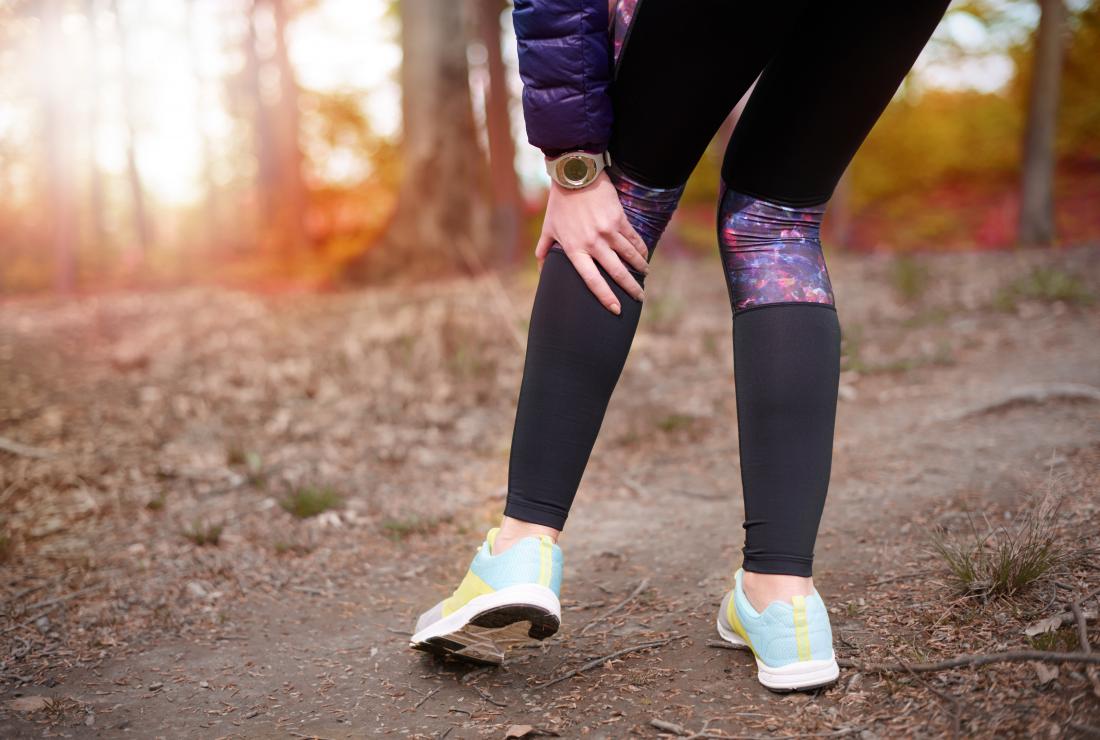If you are suffering with pain in back of the knee, it can cause not just severe discomfort, but debilitation that prevents you from doing the things you need to do or enjoy doing.
Because of this, you are no doubt scouring the internet in search of some information regarding what could cause pain behind the knee, and how to get started feeling better as soon as possible.
Luckily for you, we are here to cover all this and more. Our complete guide will help you get started diagnosing the root cause of your problem. Before we get to all that, we need to give you a quick anatomy lesson on the knee joint.
Anatomy Of The Knee
The knee joint is one of the most complex collections of bones, tendons, muscles, and ligaments in our entire body. As such, there is a lot that can go wrong here!
But because you only feel your pain in the back of knee, we can narrow down a few important part of this joint we need to discuss.
Of course, there are bones that connect to the joint – the femur, fibula, and tibia. There is also the patella, which is the bony protuberance known as the kneecap.
As far as tendons go, there are no shortage of these at play in the knee joint. You have the most common ones – MCL (medial collateral ligament), ACL (anterior cruciate ligament), and PCL ( posterior cruciate ligament).
On top of all these things, you also have tendons connecting from the quad, calf, and more. So which of these specific parts is responsible for your discomfort and pain?
What Could Cause Pain In Back Of Knee?
If you’re dealing with pain in the knee specifically on the anterior, it could be a few different things to blame. From leg cramps to an ACL tear, here are the most likely culprits.
Calf Cramps Or Strain
If you’ve never experienced cramping in your calves, consider yourself lucky. It is extremely uncomfortable. And at times, it can be incredibly painful.
This issue is essentially just the tightening and contracting of a muscle – in this case, the calf. Sometimes, this can radiate into the hamstrings, leaving the entire back of your knee in serious agony.
If you just get these on a one-off occurrence, chances are, you just had some nutrient imbalance or you were dehydrated. But if they occur more frequently, it can be cause for concern. This could indicate more serious nerve issues, infections, toxins in your blood, or even liver disease.
Another potential calf-related issue is a strain. Known scientifically as gastrocnemius tendonitis, this injury can result from sports or activities that require you to go from standing to running instantaneously – such as football, tennis, etc.
Patellar Tendonitis
Runners knee, jumper’s knee, or patellar tendonitis – these are all essentially the same thing – an overuse injury of the patellar tendon.
It’s especially common in basketball players or volleyball players, but any instance where the patellar tendon is repeatedly stressed can produce this ailment.
Your pain will localize below the kneecap, and on the worst days with this problem, the pain will radiate into the back of your knee joint. You can also expect to deal with general stiffness and weakness in the afflicted leg, and trouble straightening or bending your knees without some accompanied pain or discomfort.
Baker’s Cyst
A Baker’s cyst is less common than the conditions we’ve mentioned thus far, but if you’ve ruled those out and your pain still persists, you may be encountering a baker’s cyst.
We all have fluid-filled sacs behind our knees. These are filled with synovial fluid, and they are actually an essential aspect of the knee joint. They provide lubricant for the knee.
But sometimes, these develop too much fluid, and this can contribute to a cyst forming. Upon noticing the pain in back of the knee, you may be able to feel the physical evidence of a cyst. On top of this, watch for swelling, stiffness, and trouble flexing your knee.
If this is in fact your ailment, you’ll want to seek professional care quickly. Allowing the cyst to continue growing only increases the risk of rupture, and if this happens, the pain will intensify greatly.
ACL (Anterior Cruciate Ligament) Sprain Or Tear
If you’re an athlete of any sort and you experience a trauma that results in immediate, severe pain in back of knee, it is likely you injured your ACL.
This is perhaps the most notorious injury in contact sports, but it can even result from non-contact sports.
Any time you quickly change direction, stop, or even slow your movement, you put strain on the ACL. Over time this leads to deterioration of the ligament. At a certain point, it will become so weak it tears.
You will likely know something is wrong right when the injury occurs. Many patients report an audible and physical “pop” which is unfortunately, the ligament tearing.
After the injury you’ll have serious instability of the joint to accompany your pain. You won’t be able to fully move your knee or walk without discomfort.
Oftentimes, this requires surgery. If you don’t have a full tear, you may be able to rehab the injury with just rest and physical therapy.
PCL (Posterior Cruciate Ligament) Injury
Another potential, albeit less common, injury resulting in pain behind the knee is a PCL injury.
This injury often results from trauma to the front of the knee, but an injury can be caused by the ligament stretching two far.
A lot of the time the PCL is injured along with another ligament at the same time – such as the MCL or ACL. In some cases, this will require surgery like ACL tears.
But you may be able to get away with the RICE method and physical therapy if you didn’t damage other ligaments in your knee!
